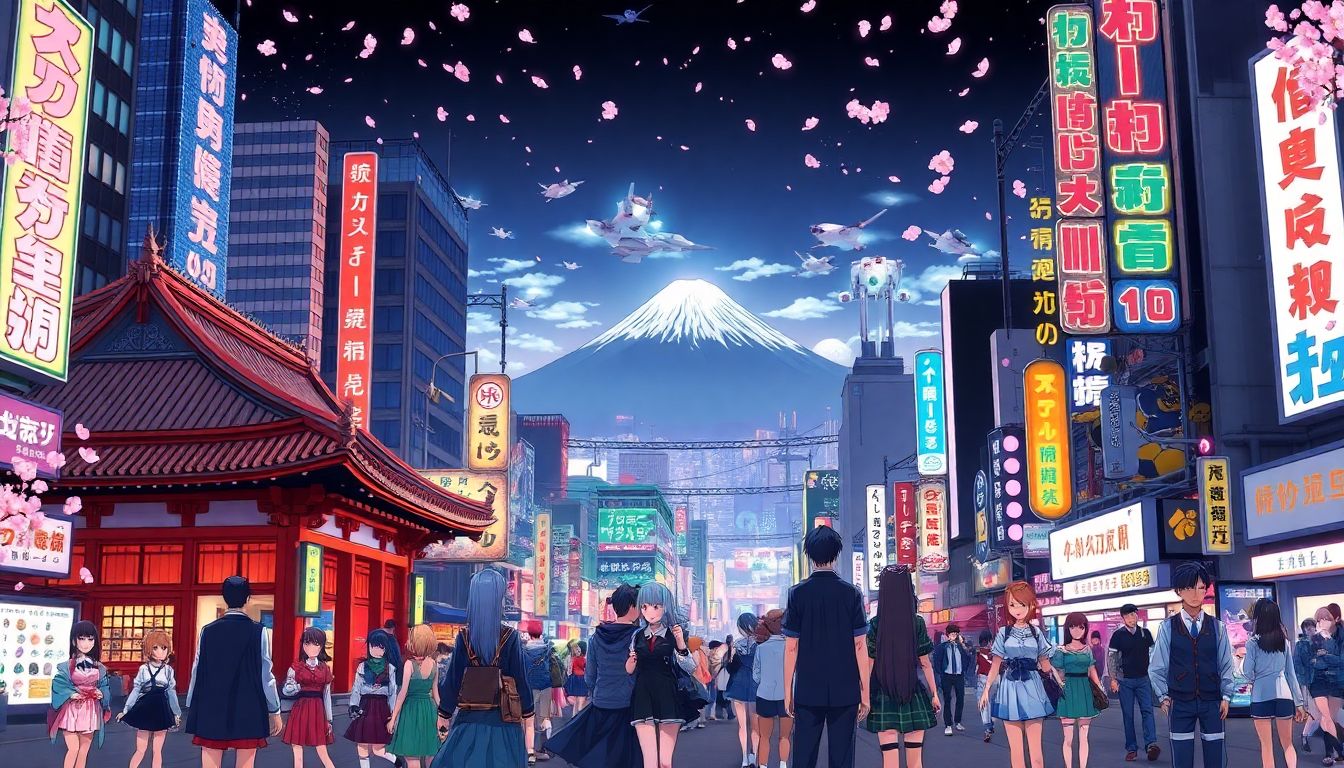Introduction
Anime is everywhere now — on TV, streaming services, merchandise, and even fashion. It’s a huge part of pop culture worldwide. But have you ever wondered why Japan became the leader of this anime wave? Japan’s deep roots in history, culture, and technology made it the birthplace of anime as we know it today. This article takes a closer look at why Japan is considered the pioneer of anime. We’ll explore its history, cultural ties, tech innovations, and how the industry shaped a global phenomenon.
The Historical Evolution of Anime in Japan
Origins of Japanese Animation
Japanese animation didn’t spring up overnight. It came from both Western cartoons and traditional Japanese art styles. Early influences from Western animations like Disney helped inspire local artists. Meanwhile, Japan already had a rich history of visual storytelling through paintings and prints. The rise of manga, comic books from Japan, created a perfect foundation for animation.
Osamu Tezuka, often called the "God of Manga," played a big role here. His work, "Astro Boy," released in 1963, was a game-changer. It introduced many features now common in anime, like expressive faces and fast-paced stories.
Post-War Growth and Development
After WWII, Japan rebuilt its economy and culture. During this time, animation studios like Toei Animation began forming. They focused on producing entertainment for a recovering nation. The government supported this push because it helped shape Japanese culture. New industry infrastructure made it easier for studios to grow and innovate.
The Golden Age of Anime
The 1980s and 1990s are considered “the golden age” of anime. During this period, many hit shows and movies appeared. Classics like “Akira,” “Dragon Ball,” and “Sailor Moon” traveled beyond borders, drawing international fans. Anime cons and fan communities sprung up across the globe. These fans helped spread Japanese anime into a worldwide hobby.
Cultural Factors Contributing to Japan’s Pioneering Status
Deep Roots in Japanese Culture and Art
Anime often reflects Japan’s cultural history. For example, traditional ukiyo-e prints influenced the look of many early anime characters. Themes rooted in Shinto, Buddhist, and folk stories appear regularly. These themes give anime a distinct Japanese flavor that appeals worldwide.
Manga and Anime Synergy
Manga is more than just comic books. It’s the birthplace of many anime stories. Artists develop detailed characters and plots in manga, which then become anime adaptations. This close link nurtures unique storytelling techniques and artistic styles in Japanese animation.
National Identity and Creative Expression
Anime is also a way for Japan to express its identity. It showcases societal values, hopes, and worries. Some themes, like honor and perseverance, are very Japanese but resonate universally. This blend of local and global appeal helps explain why anime connects with so many people.
Technological Innovations and Industry Infrastructure
Advances in Animation Techniques
Japanese animators developed specific techniques to make their work stand out. For example, limited animation, using fewer frames per second, made productions quicker and cheaper while maintaining style. These techniques created the signature look of anime — smooth yet stylized.
The Role of Studios and Production Committees
Major studios like Toei, Gainax, Madhouse, and Kyoto Animation keep pushing creative boundaries. Collaboration among multiple companies led to higher quality and more diverse content. This teamwork kept anime fresh and innovative.
Digital Revolution and Global Accessibility
Moving from hand-drawn to digital animation allowed faster production and better quality. Internet streaming made anime accessible worldwide. Fans no longer need to rely on TV broadcasts — they can watch anywhere, anytime. This change expanded anime's reach dramatically.
Industry Dynamics and Business Strategies
Marketing and Distribution Pioneers
Japanese companies excelled at marketing anime globally. Licensing deals, merchandise, and partnerships boosted sales. Conventions like Anime Expo helped connect fans with new shows. Localized marketing tactics also brought anime closer to audiences abroad.
Developing Creators and Industry Talent
Japan’s industry invests in talent. Apprenticeships and training programs nurture new creators. Big names like Hayao Miyazaki and Mamoru Hosoda started as young artists. Their work sets a high standard for quality and storytelling.
Promoting Cultural Diplomacy
Japan used anime as a soft power tool. The government supported exports to introduce Japanese culture to the world. This helped strengthen Japan’s image and opened new markets for entertainment and technology.
The Global Impact and Continuing Leadership of Japan in Anime
International Reception and Market Size
Anime generates billions each year globally. Streaming platforms like Crunchyroll and Netflix show Japanese series to millions worldwide. Fans imitate styles in cosplay and fan art, showing anime’s deep influence. Japan remains at the forefront of anime creation and export.
Innovation and New Trends Today
Today, anime incorporates CGI, VR, and new storytelling formats. Genres expand as creators experiment with new styles. International collaborations bring fresh ideas, but many of these trends are rooted in Japan’s innovative spirit.
Tips for Fans and Creators
If you want to dive into anime creation, start by learning basic animation skills online. Support local and online anime communities, attend conventions, and follow Japanese studios. These steps bring you closer to the world of anime.
Conclusion
Japan is the true pioneer of anime because of its rich history, deep cultural roots, technological innovations, and smart industry strategies. From Osamu Tezuka’s groundbreaking manga to today’s global hits, Japan continues leading anime’s evolution. Understanding this history helps us appreciate why anime remains a unique and influential art form. As the industry keeps growing, Japan’s role as an innovator and cultural ambassador will remain strong. For everyone who loves anime, recognizing its origins in Japan deepens appreciation and inspires future stories to come.



Comments ()